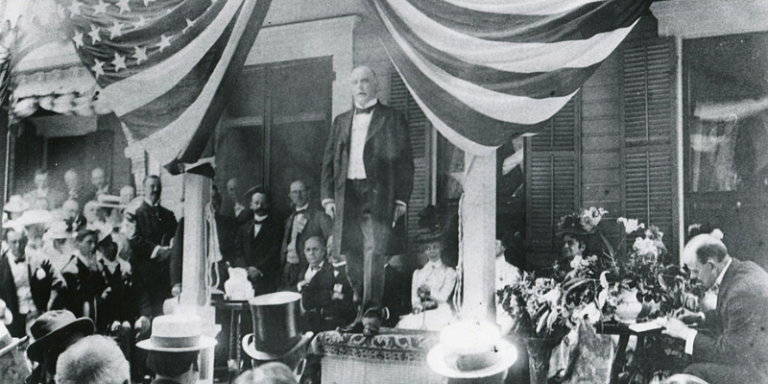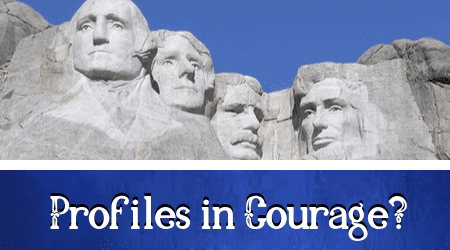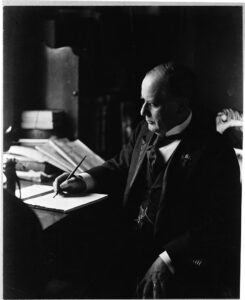William McKinley: The Third Presidential Assassination
McKinley was shot during his second term.
By: Kelli Ballard | July 17, 2020 | 491 Words

William McKinley , 1900. (Photo by PhotoQuestGetty Images)
William McKinley (1843-1901) was the 25th president of the United States and the third to be assassinated. His terms saw the United States in a victory over Spain, freeing Cuba, and leading the nation out of a depression.
In 1869, McKinley started his political career as a Republican and in 1876 he was elected to the House of Representatives. While acting in Congress, he served on the very powerful House Ways and Means Committee, where he earned a reputation as an elected official who fought for protection of the economy using high tariffs on imported merchandise. But his popularity took a hit in 1890 when a tariff bill in his name passed and voters became upset with the rising consumer prices. He left Congress to run for governor of Ohio and served two terms in that position. He ran for president for the first time in 1896.

Wealthy businessman Marcus Alonzo Hanna used his influence to promote McKinley as “the advance agent of prosperity.” The Democrats, on the other hand, nominated William Jennings Bryan, supporting his goal of “free and unlimited coinage of both silver and gold,” which would have inflated the currency.
Hanna promoted his candidate through financial support while McKinley followed former President Benjamin Harrison’s “front-porch” campaign and met delegations from the convenience of his home porch. McKinley beat Bryan in 1896, winning the popular vote by a margin of about 600,000 (the largest win in 25 years) and he gained more electoral votes.

President William McKinley (Photo by Library of Congress/Corbis/VCG via Getty Images)
Cuba was controlled by Spain when McKinley took office, but the people were revolting. American newspapers described a horrible, bloody situation there that included concentration camps. Meanwhile, Spanish troops were trying to put down the rebellion and the American people started demanding a war to free Cuba. In February 1898, the U.S. battleship Maine exploded in Havana’s harbor and McKinley asked Congress for the power to become involved in the conflict. On April 25, the U.S. formally declared war. The Spanish-American War only lasted for 100 days before American forces defeated Spain near Santiago harbor in Cuba.
In December 1898, the Treaty of Paris was signed, officially ending the war and granting Guam, the Philippines, and Puerto Rico to the U.S.In 1900, McKinley ran for re-election, again facing Bryan, and again beating him for office.
The second-term president began a tour of the western states and then attended and gave a speech on September 5 at the Pan-American Exposition. While standing in the receiving line, Leon Czolgosz, an unemployed Detroit mill worker, walked up to him wearing a bandage on his hand and proceeded to shoot the president twice in the chest at point-blank range. He claimed the president was an “enemy of the people.” At first, the prognosis was good for McKinley, but then he developed gangrene and died five days later. The assassin was executed for his crimes in October 1901.
















